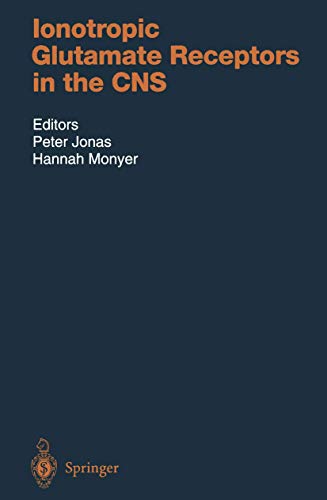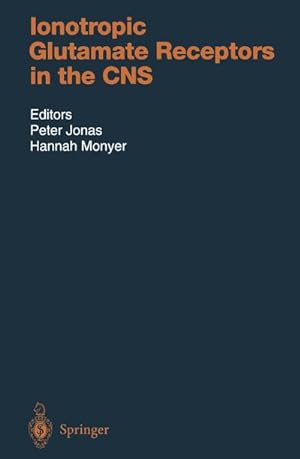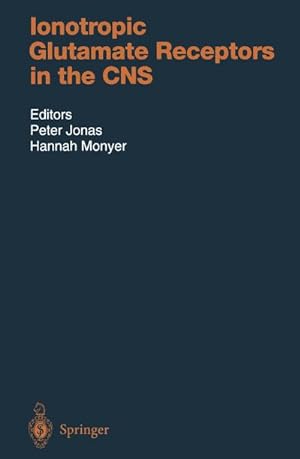jonas peter monyer hannah (6 Ergebnisse)
Suchfilter
Produktart
- Alle Product Types
- Bücher (6)
- Magazine & Zeitschriften (Keine weiteren Ergebnisse entsprechen dieser Verfeinerung)
- Comics (Keine weiteren Ergebnisse entsprechen dieser Verfeinerung)
- Noten (Keine weiteren Ergebnisse entsprechen dieser Verfeinerung)
- Kunst, Grafik & Poster (Keine weiteren Ergebnisse entsprechen dieser Verfeinerung)
- Fotografien (Keine weiteren Ergebnisse entsprechen dieser Verfeinerung)
- Karten (Keine weiteren Ergebnisse entsprechen dieser Verfeinerung)
- Manuskripte & Papierantiquitäten (Keine weiteren Ergebnisse entsprechen dieser Verfeinerung)
Zustand Mehr dazu
- Neu (4)
- Wie Neu, Sehr Gut oder Gut Bis Sehr Gut (1)
- Gut oder Befriedigend (1)
- Ausreichend oder Schlecht (Keine weiteren Ergebnisse entsprechen dieser Verfeinerung)
- Wie beschrieben (Keine weiteren Ergebnisse entsprechen dieser Verfeinerung)
Einband
Weitere Eigenschaften
- Erstausgabe (Keine weiteren Ergebnisse entsprechen dieser Verfeinerung)
- Signiert (Keine weiteren Ergebnisse entsprechen dieser Verfeinerung)
- Schutzumschlag (Keine weiteren Ergebnisse entsprechen dieser Verfeinerung)
- Angebotsfoto (3)
Sprache (1)
Gratisversand
- Kostenloser Versand nach USA (Keine weiteren Ergebnisse entsprechen dieser Verfeinerung)
Land des Verkäufers
Verkäuferbewertung
-
Ionotropic Glutamate Receptors in the CNS (Handbook of Experimental Pharmacology, Volume 141)
Anbieter: Zubal-Books, Since 1961, Cleveland, OH, USA
Zustand: Good. 535 pp., Hardcover, ex library, else text clean and binding tight. - If you are reading this, this item is actually (physically) in our stock and ready for shipment once ordered. We are not bookjackers. Buyer is responsible for any additional duties, taxes, or fees required by recipient's country.
-
Ionotropic Glutamate Receptors in the Cns
Verlag: Springer-Verlag Berlin and Heidelberg GmbH & Co. K, 1999
ISBN 10: 3540661204 ISBN 13: 9783540661207
Sprache: Englisch
Anbieter: Ammareal, Morangis, Frankreich
SonderangebotEUR 6,99
EUR 22,50 für den Versand von Frankreich nach USAAnzahl: 1 verfügbar
In den WarenkorbHardcover. Zustand: Très bon. Ancien livre de bibliothèque. Légères traces d'usure sur la couverture. Edition 1999. Ammareal reverse jusqu'à 15% du prix net de cet article à des organisations caritatives. ENGLISH DESCRIPTION Book Condition: Used, Very good. Former library book. Slight signs of wear on the cover. Edition 1999. Ammareal gives back up to 15% of this item's net price to charity organizations.
-
Ionotropic Glutamate Receptors in the CNS
Verlag: Springer Berlin Heidelberg, Springer Berlin Heidelberg Nov 1999, 1999
ISBN 10: 3540661204 ISBN 13: 9783540661207
Sprache: Englisch
Anbieter: buchversandmimpf2000, Emtmannsberg, BAYE, Deutschland
Buch. Zustand: Neu. Neuware -It is now widely accepted that glutamate is the major excitatory neurotrans mitter in the mammalian central nervous system. The main criteria for accept ing a molecule as a chemical transmitter appear to be fulfilled at several synapses: Glutamate mimics the action of the natural transmitter in the post synaptic neuron (CURTIS et al. 1959), glutamate is present in presynaptic ele ments (OTTERSEN and STORM-MATHISEN 1984), and glutamate is released from central neurons in an activity-dependent manner (BRADFORD 1970). The postsynaptic receptors that mediate the effects of glutamate are markedly diverse. Based on their activation by agonists that act more selec tively than the natural transmitter itself, a-amino-3-hydroxy-5-methyl- isoxazolepropionate (AMPA) receptors, kainate receptors, and N-methyl-D aspartate (NMDA) receptors can be distinguished. Molecular cloning has revealed additional structural diversity. To date, almost 20 glutamate receptor subunit genes have been identified, and an even larger number of splice vari ants and edited versions are present in the mammalian brain. Analysis of synaptic transmission revealed that 'the' excitatory synapse does not exist. Glutamatergic synapses in different circuitries differ substan tially in their signaling properties, although they use the same transmitter. We have learned that cellular, subcellular, and molecular factors determine synap tic function, and that glutamate receptor subunit diversity is of direct relevance in shaping the unique signaling properties of a glutamatergic synapse. 560 pp. Englisch.
-
Ionotropic Glutamate Receptors in the CNS
Verlag: Springer Berlin Heidelberg, 2010
ISBN 10: 3642085393 ISBN 13: 9783642085390
Sprache: Englisch
Anbieter: AHA-BUCH GmbH, Einbeck, Deutschland
Taschenbuch. Zustand: Neu. Druck auf Anfrage Neuware - Printed after ordering - It is now widely accepted that glutamate is the major excitatory neurotrans mitter in the mammalian central nervous system. The main criteria for accept ing a molecule as a chemical transmitter appear to be fulfilled at several synapses: Glutamate mimics the action of the natural transmitter in the post synaptic neuron (CURTIS et al. 1959), glutamate is present in presynaptic ele ments (OTTERSEN and STORM-MATHISEN 1984), and glutamate is released from central neurons in an activity-dependent manner (BRADFORD 1970). The postsynaptic receptors that mediate the effects of glutamate are markedly diverse. Based on their activation by agonists that act more selec tively than the natural transmitter itself, a-amino-3-hydroxy-5-methyl- isoxazolepropionate (AMPA) receptors, kainate receptors, and N-methyl-D aspartate (NMDA) receptors can be distinguished. Molecular cloning has revealed additional structural diversity. To date, almost 20 glutamate receptor subunit genes have been identified, and an even larger number of splice vari ants and edited versions are present in the mammalian brain. Analysis of synaptic transmission revealed that 'the' excitatory synapse does not exist. Glutamatergic synapses in different circuitries differ substan tially in their signaling properties, although they use the same transmitter. We have learned that cellular, subcellular, and molecular factors determine synap tic function, and that glutamate receptor subunit diversity is of direct relevance in shaping the unique signaling properties of a glutamatergic synapse.
-
Ionotropic Glutamate Receptors in the CNS
Verlag: Springer Berlin Heidelberg, 1999
ISBN 10: 3540661204 ISBN 13: 9783540661207
Sprache: Englisch
Anbieter: AHA-BUCH GmbH, Einbeck, Deutschland
Buch. Zustand: Neu. Druck auf Anfrage Neuware - Printed after ordering - It is now widely accepted that glutamate is the major excitatory neurotrans mitter in the mammalian central nervous system. The main criteria for accept ing a molecule as a chemical transmitter appear to be fulfilled at several synapses: Glutamate mimics the action of the natural transmitter in the post synaptic neuron (CURTIS et al. 1959), glutamate is present in presynaptic ele ments (OTTERSEN and STORM-MATHISEN 1984), and glutamate is released from central neurons in an activity-dependent manner (BRADFORD 1970). The postsynaptic receptors that mediate the effects of glutamate are markedly diverse. Based on their activation by agonists that act more selec tively than the natural transmitter itself, a-amino-3-hydroxy-5-methyl- isoxazolepropionate (AMPA) receptors, kainate receptors, and N-methyl-D aspartate (NMDA) receptors can be distinguished. Molecular cloning has revealed additional structural diversity. To date, almost 20 glutamate receptor subunit genes have been identified, and an even larger number of splice vari ants and edited versions are present in the mammalian brain. Analysis of synaptic transmission revealed that 'the' excitatory synapse does not exist. Glutamatergic synapses in different circuitries differ substan tially in their signaling properties, although they use the same transmitter. We have learned that cellular, subcellular, and molecular factors determine synap tic function, and that glutamate receptor subunit diversity is of direct relevance in shaping the unique signaling properties of a glutamatergic synapse.
-
Ionotropic Glutamate Receptors in the CNS (Handbook of Experimental Pharmacology)
Anbieter: Revaluation Books, Exeter, Vereinigtes Königreich
EUR 750,25
EUR 14,19 für den Versand von Vereinigtes Königreich nach USAAnzahl: 2 verfügbar
In den WarenkorbHardcover. Zustand: Brand New. 1st edition. 535 pages. 9.25x6.25x1.00 inches. In Stock.





